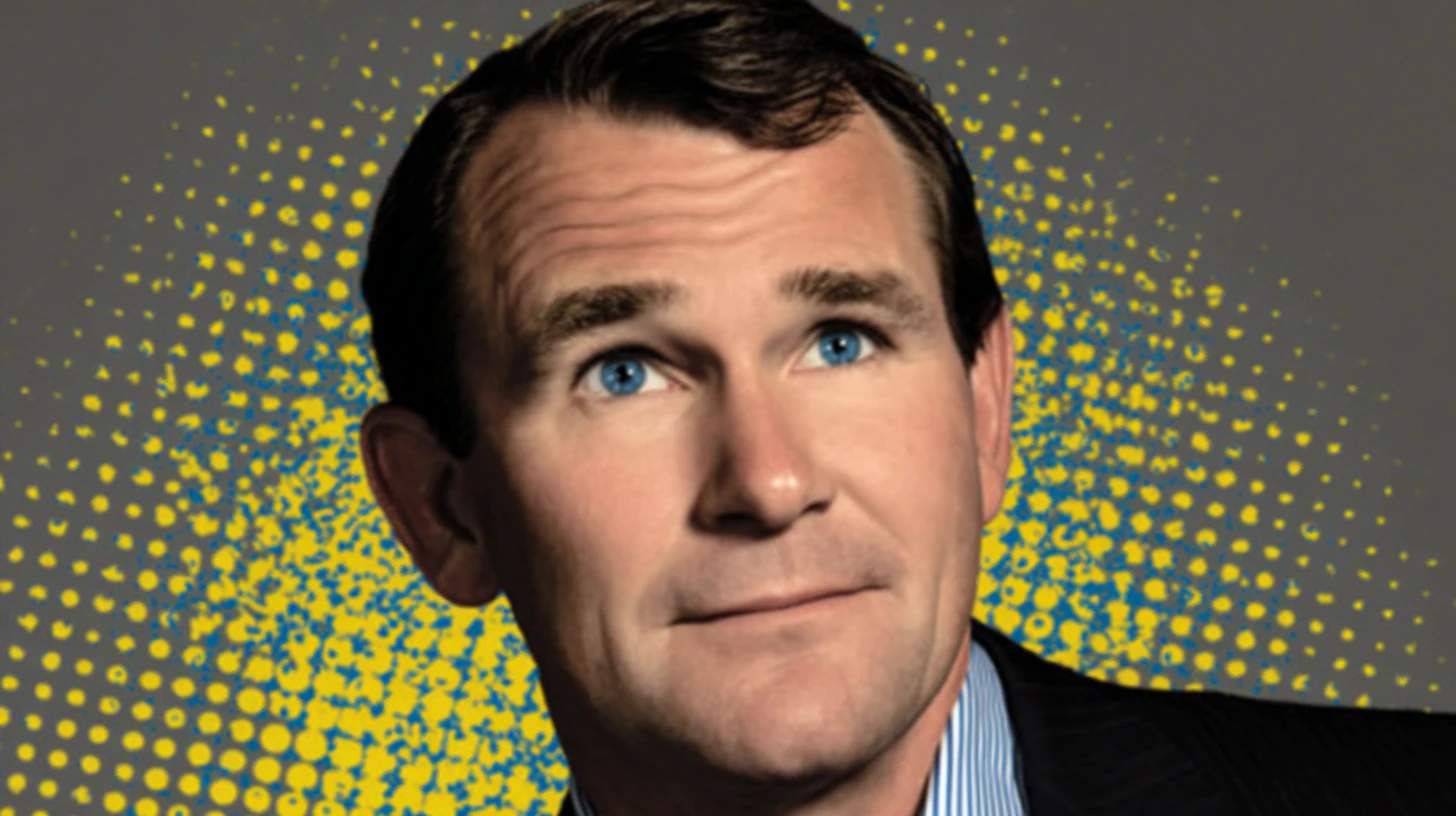.webp)
© History Oasis


Milton Hershey founded The Hershey Company in 1903.
He built the world's largest chocolate plant and engineered every detail of the surrounding town—from worker housing to public transit systems.
The factory complex put together his vision of an industrial community designed to nurture both commerce and human welfare.
As he perfected his chocolate bar formula in the new facility.
Later he and his wife Catherine confronted their inability to have children and founded the Hershey Industrial School to educate orphaned boys.

William F.R. Murrie expanded the Hershey Chocolate Corporation during his presidency from 1908 to 1947.
The company created products that shaped American candy culture:
Murrie brought systematic changes to Hershey's operations, implementing structured management approaches and recognizing advertising's power to drive sales.
He faced a defining challenge in the 1930s when workers struck over labor conditions.
His response to their demands drew sharp criticism and revealed the tensions between corporate growth and worker welfare.

Percy Staples led the consumer goods giant as President from 1947 to 1956, after managing the company's Cuban operations.
His insights from Cuba shaped key decisions.
In 1944, he pushed for selling Hershey's Cuban holdings—the sugar plantations and utilities he had rebuilt—citing financial risks.
This led to a $30 million sale to Cuban Atlantic Sugar Company in 1945.
As President, Staples tackled problems head-on.
He secured a decisive victory in Hershey Chocolate's legal battle against Annville Stone Company and protected the assets of the Hershey Industrial School Trust.

Samuel F. Hinkle shaped Hershey Chocolate Corporation first through hands-on technical roles—plant chemist, chief chemist, research director, and plant manager—before leading the company as President from 1956 to 1965.
His deep understanding of chocolate-making processes drove improvements in production methods and operational efficiency.
Beyond Hershey, Hinkle helped establish Penn State University's College of Medicine and Hershey Medical Center.

Under Harold S. Mohler's leadership from 1965 to 1976, Hershey Chocolate Corporation transformed from a single-product company into a food conglomerate.
As President and CEO, he pushed the company into advertising and expanded its reach through strategic acquisitions, including the purchase of H.B. Reese Candy Company.
His technical foundation as an engineer, combined with his skill in developing talent, enabled him to modernize the company's operations.
He built a strong executive team that established marketing research capabilities and revamped the sales organization.
His final initiatives strengthened Hershey's corporate structure—establishing a government relations office in Washington, D.C.

William Dearden led Hershey from 1976 to 1985.
Where the company had once concentrated solely on chocolate and caramel products, Dearden decided to diversify.
His leadership sparked a revival that restored Hershey's dominance in American chocolate manufacturing.
As a graduate of Milton Hershey School, he understood the town's cultural foundations.
This insight drove him to protect local landmarks, most notably when he spearheaded the 1984 campaign to preserve High Point, a historic Hershey building slated for demolition.

Richard A. Zimmerman improved Hershey's market position during his 1984-1993 tenure as CEO.
Annual sales doubled to $3.2 billion through consistent double-digit growth, restoring the company's dominance.
His strategy centered on strengthening core operations while pruning lagging businesses.
He launched targeted products:
He also forged international partnerships to expand Hershey's reach.
He emerged as a powerful advocate for preserving Hershey's heritage, opposing the company's proposed sale in the early 2000s.

Kenneth Wolfe was CEO between 1994 to 2001.
He expanded product lines beyond traditional chocolate bars, targeting new market segments and doubling company revenue.
He was known for conducting weekly breakfast meetings with frontline employees, gathering unfiltered feedback that shaped company decisions.
Wolfe caught onto the trend toward healthier snacks and responded by developing low-fat alternatives while strengthening Hershey's core chocolate brands.

Richard Lenny led Hershey through pivotal challenges during his 2001-2007 leadership.
Workers struck, the Hershey Trust pushed for a company sale, and global competition intensified.
He responded by closing plants and cutting jobs to boost profits, drawing criticism but defending these moves as essential for survival.

David J. West led Hershey as CEO, President, and director from 2007 to 2011, driving $5 billion in new equity value through sustained profit growth and rising sales.
His decisions strengthened the company's core operations:
These improvements earned Hershey recognition from Forbes Magazine as one of the World's 100 Most Innovative Companies in 2011.

John P. Bilbrey led Hershey from 2011 to 2017, steering the company through targeted consumer research and strategic investments.
His leadership yielded consistent financial growth while strengthening Hershey's core brands in North America.
He also put large effort into expanding into specific emerging markets.
Bilbrey improved the supply chain, launched new product lines, and implemented measurable sustainability targets.
His initiatives cut energy usage, water consumption, and waste production while establishing clear metrics for community impact and employee development.

Michele Buck became Hershey's CEO in March 2017 and transformed the traditional candy maker into a broader snacking company.
She expanded beyond chocolate and confections by acquiring strategic brands, while simultaneously strengthening the core candy business.
To boost productivity, Buck revamped Hershey's workforce operations.
She introduced performance-based pay, adjusted staffing levels, created flexible work schedules, and funded employee skill development.
These targeted changes energized the workforce and improved output.
Buck champions workplace diversity by recruiting from varied talent pools, creating advancement paths for underrepresented employees, and implementing measurable inclusion initiatives.
Via her leadership Hershey recognition from Forbes as the World's Most Female Friendly Company in 2021.

Kirk Tanner became Hershey's CEO in August 2025 after thirty years at PepsiCo, where he led the $25 billion North American beverages division overseeing brands like Gatorade and Mountain Dew.
He served eighteen months as Wendy's CEO before joining Hershey.
Tanner will focus on three priorities: understanding consumers, building customer partnerships, and investing in employees. His leadership aims to strengthen Hershey's core chocolate business while expanding into broader snacking categories.